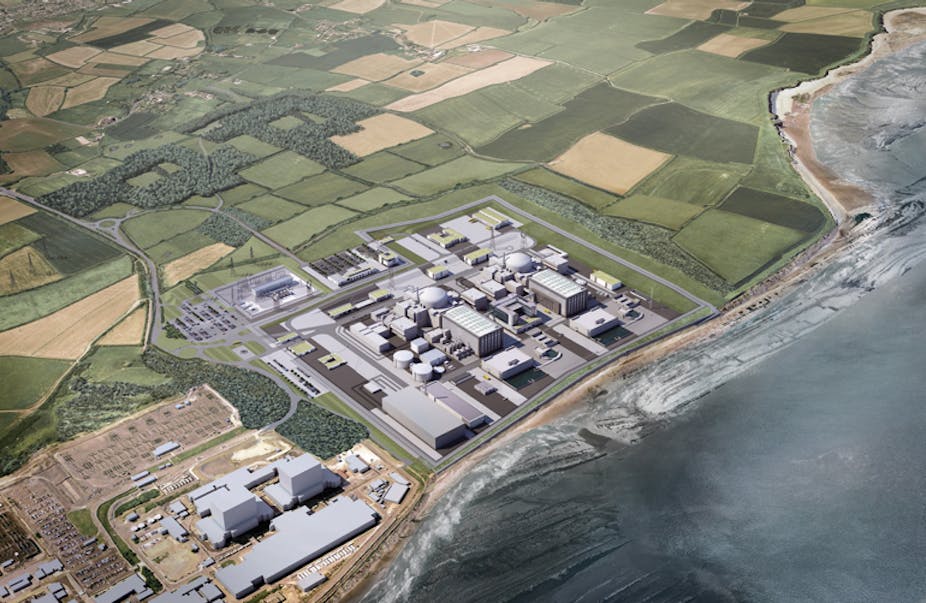There has long been talk of the need for a “nuclear renaissance”, and now it seems underway. The deal has been struck that would see the first new British nuclear power station in a generation. But is this the first of a whole fleet of new nuclear power plants, or just a one-off project? The latter has happened before – at Sizewell B in Suffolk, the single reactor built in 1995 was to have been the first of a new generation of planned plants.
Today’s news is that a two reactor power station is to be built at Hinkley Point near Bristol capable of supplying 3,340MW, or roughly 7% of British electricity in the 2020s. This has come at a price, called the “strike price”. French company EDF Energy, the lead firm of the construction consortium, has secured a long-term commitment from the government that the nuclear-powered electricity it generates will be bought at the hefty price of £92.50 per megawatt hour. That wholesale price is almost double today’s market price, and isn’t far off what the end consumer is paying today to keep their lights on. When wholesale prices meet retail prices things are unsustainable. Don’t forget that between power generation and use there are businesses that deal with transmission, distribution and supply, and they all need their cut.

New nuclear power stations will help us with our ambition to decarbonise the power sector and will do much to improve energy security. But nuclear power stations are not cheap, especially the French European Pressurised Reactor (EPR) chosen for Hinkley Point C. The high upfront costs of nuclear power today run into a political reality that for consumers, and hence voters, the dominant consideration in electricity is the bill and most especially the policy component of that bill.
EDF Energy has done well to win a high strike price for the new reactor at Hinkley Point. Prime Minister David Cameron has explained to the nation why it is a price that should be paid. The government believes in this step towards a renaissance of nuclear power in Britain, and he is willing to absorb the political heat even on the day that another of the big six power firms, NPower, hiked its electricity price by 9.3% and gas price by a whopping 11.1%.
While the UK can probably afford to build Hinkley C, it would struggle to afford a fleet of such low carbon nuclear power stations at such prices - consumers are just too tightly squeezed. If the UK’s low carbon targets are to be achieved, then the costs of low carbon electricity options including nuclear and renewables must fall if we are to succeed in replacing our polluting coal and gas power stations.
The two reactors to be built at Hinkley will be the third and fourth of a kind in Europe. Experience with the first two in Finland and France - have been mired in time and cost overruns. With lessons learned there and with recent successes such as the Olympics in mind, Britain’s engineering firms are quietly confident that they will do better. It is my hope that construction improvements can indeed be translated into lower costs for later units.
For a nuclear renaissance to take hold in Britain, then costs must fall. Those looking at new nuclear power stations for other proposed sites in Britain should plan to receive a lower strike price, not least because they cannot expect the Prime Minister to provide top-level rhetorical support again. That said, the government cannot relax, and with the industry it should now focus on the goal of further new nuclear power stations developed with affordability in mind.

